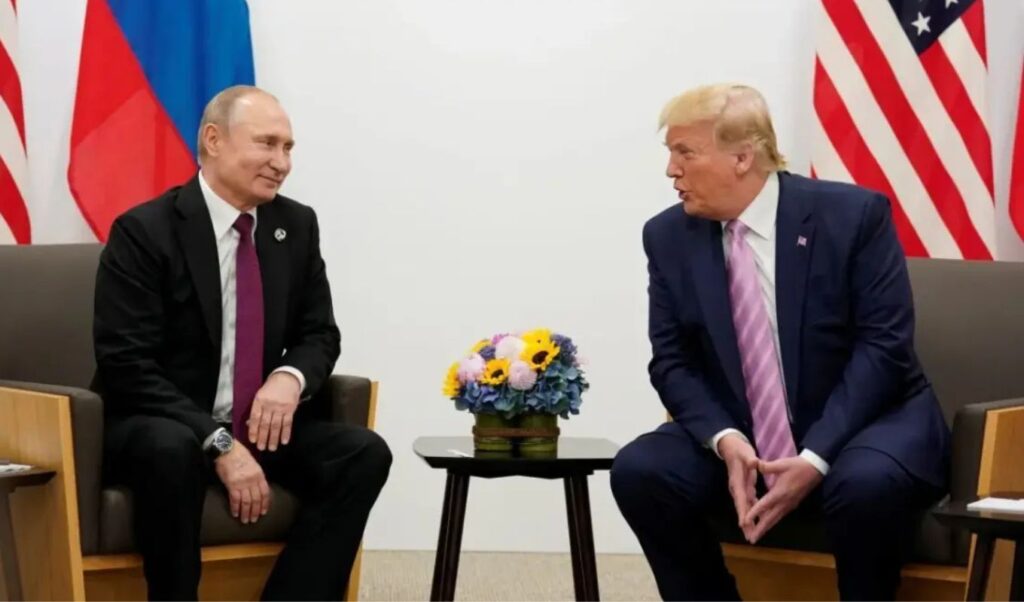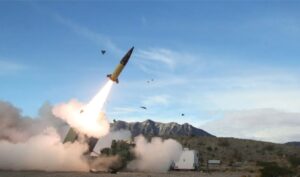Donald Trump made a move that international media characterized as a 50-day ultimatum to Russia to end the war in Ukraine, with the American president threatening to impose 100% tariffs on both Moscow and countries that trade with it (secondary tariffs on those buying Russian fossil fuels), in a message primarily targeting China and India. The American president declares himself “disappointed” with Vladimir Putin in today’s BBC interview, however it appears this “tectonic policy shift” carries calculated risk and was received with satisfaction not only by Kyiv and Washington’s NATO allies, but even by Russia itself.
Trump: The NATO summit that opened the path for US military aid to Ukraine
The American president is orchestrating military reinforcement of Ukraine through equipment purchases from US European allies. According to sources, the new defense package (with American-made weapons) may include short-range missiles, Howitzer shells and medium-range air-to-air missiles to NATO members, with Patriot systems appearing as key equipment and having priority, especially for Kyiv itself, as Russia’s recent attacks rely on drones, providing a cheap and effective option for Moscow. It was no coincidence that the announcement was made during discussions with Alliance Secretary General Mark Rutte, just as The Hague Summit’s decision was no accident: Alliance members agreed to increase defense spending to 5%, however, as Politico notes, military aid to Ukraine can count toward this amount, helping to “reduce” the necessary sum for the actual increase in such spending as a percentage of GDP.
Meanwhile, this choice both maintains the unbreakable US-NATO bond and appears to align with Trump’s preference not to have the US itself send weapons to Ukraine, a choice the Republican tycoon has criticized in the past, with funding coming from United States partners in the Old Continent, also boosting American defense industry during a period of intense activity due to tariffs.
In any case, and this has its own significance, there are no reports of offensive weapons being provided by the White House. Whitaker, the US envoy to NATO, stated that immediate focus on sending weapons to Ukraine concerns defensive systems, such as Patriot batteries that can intercept Russian ballistic missiles. But he didn’t rule out the possibility of providing offensive weapons. “All weapons are as offensive as they are defensive,” he said. “Obviously an air defense system is important and critical to the situation, but at the same time we’re not taking anything off the table,” he stated, as reported in American media, which constitutes another message to Moscow.
Russia’s warnings about “offensive” weapons
However, the current non-inclusion of American offensive missiles capable of striking deep into Russian territory, something Axios reported yesterday, Monday, could have been “included in the package,” shows a tendency toward “restraint” by the US regarding how far the “logic of threats” against Russia will go to advance a ceasefire. Already before Trump’s announcements, Moscow was signaling that provision of offensive missiles by the United States would lead to escalation that could even reach nuclear weapons use. “All this will end with a nuclear ultimatum, because with current parameters it cannot end any other way,” wrote Margarita Simonyan, editor-in-chief of Russian station RT, in her post. “It’s not that we want this. It’s that we have no other choice left,” she added. Simonyan’s comments were reposted by prominent Russian state television host Vladimir Solovyov, while war bloggers close to the Kremlin moved in the same direction, signaling coordinated escalatory rhetoric from Moscow’s side.
The rise in Russian stock market and ruble and Medvedev’s reaction
However, while Kyiv received the US reinforcement with satisfaction (with Volodymyr Zelensky expressing his gratitude), this appeared to be true for the Russian side as well, both regarding moves in the military and economic spheres. Specifically, the Russian stock market rose 2.7% after Donald Trump’s warning that he would impose “very harsh tariffs” on Russia if no agreement is reached to end the war in Ukraine within 50 days. Meanwhile, the Russian ruble also reversed losses against the dollar and increased against China’s yuan, the most tradeable foreign currency in Russia.
“Trump performed below market expectations,” Invest Era analyst Artyom Nikolayev told Reuters characteristically. “He gave 50 days during which Russian leadership can find something and extend the negotiation process,” he noted and added: “Additionally, Trump likes to postpone and extend such deadlines,” obviously having the recent tariff example in mind.
“Trump issued a theatrical ultimatum to the Kremlin. The world shuddered, expecting the consequences,” wrote Dmitry Medvedev on X, known for his “harsh” posts. “Belligerent Europe was disappointed. Russia didn’t care,” added the former Russian president.
Trump issued a theatrical ultimatum to the Kremlin.
The world shuddered, expecting the consequences.
Belligerent Europe was disappointed.
Russia didn’t care.— Dmitry Medvedev (@MedvedevRussiaE) July 15, 2025




